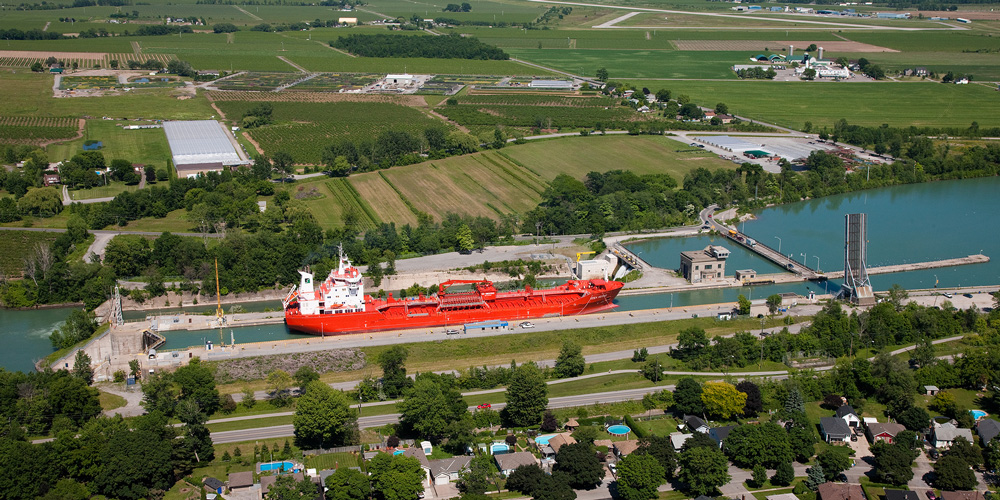Seaway Opens As Scheduled
March 25, 2004
St. Lambert, Québec, March 25, 2004 – The Montreal/Lake Ontario section of the St. Lawrence Seaway officially opened today with the transit of the M/V Halifax at the St. Lambert Lock. Destined for Toledo carrying a load of iron ore from Sept-Iles, the 17,752 tonne bulker has a complement of 25 sailors. The Seaway has opened on or before March 31st in 15 of the last 20 years.
The official opening of the St. Lawrence Seaway occurred on the Welland Canal two days ago, marking its 46th consecutive shipping season. At that ceremony, Richard Corfe, President and CEO of The St. Lawrence Seaway Management Corporation (SLSMC) unveiled the first billboard in a striking educational campaign to promote the many benefits to be derived from the increased use of the marine mode – reduced congestion, reduced air pollution and reduced highway maintenance costs. Starting next week, anyone who travels the Toronto – Windsor corridor by road will start to see these billboards along the 400-series of highways.
Corfe also announced a new operating draft of 26’6″, (an increase of three inches over last year) for all inland vessels and for ocean vessels equipped with bow thrusters. This will allow full size seaway vessels to carry an additional 300 T on each voyage, improving the efficiency and productivity of both the system and vessel fleets.
At the ceremony, Richard Corfe joined by his U.S. counterpart Albert Jacquez, Administrator of the Saint Lawrence Seaway Development Corporation, noted that 2004 marks the beginning of the countdown to the 50th anniversary of the Seaway. Fifty years ago this summer, construction began on the St. Lawrence Seaway, the first step in opening the way for ocean vessels into the heart of North America.
Since then, more than two billion tonnes of cargo have gone through Seaway locks.
“2004 holds promise, not only to be busy,” says Corfe “but highly productive, in our collective endeavour to raise the profile of marine transportation. We will be in the thick of things, looking for new ways to use the system, new cargoes and new partnerships, while reinforcing the ones we have”.






